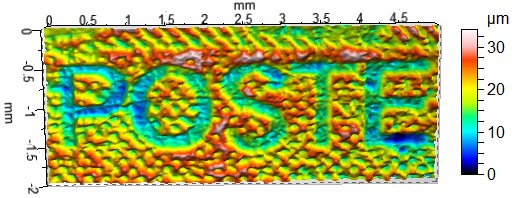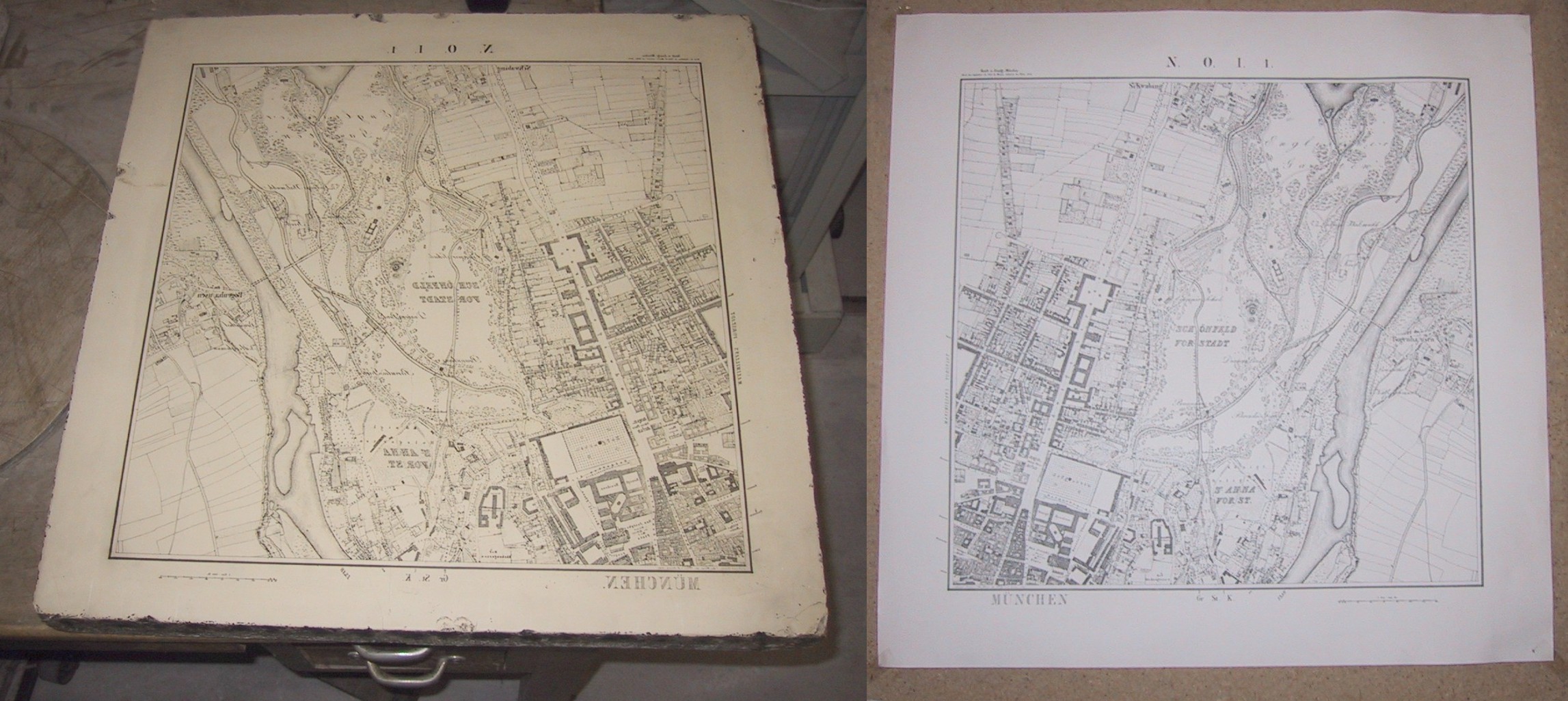|
Planographic Printing
Planographic printing means printing from a flat surface, as opposed to a raised surface (as with relief printing) or incised surface (as with intaglio printing). Lithography and offset lithography are planographic processes that rely on the property that water will not mix with oil. The image is created by applying a tusche (greasy substance) to a plate or stone. The term lithography comes from ''litho'', for ''stone'', and -''graph'' to draw. Certain parts of the semi-absorbent surface being printed on can be made receptive to ink while others (the blank parts) reject it. See also *Lithography *Viscosity printing *Flexography External links Planographic printing New York Public Library [...More Info...] [...Related Items...] OR: [Wikipedia] [Google] [Baidu] |
Printing
Printing is a process for mass reproducing text and images using a master form or template. The earliest non-paper products involving printing include cylinder seals and objects such as the Cyrus Cylinder and the Cylinders of Nabonidus. The earliest known form of printing as applied to paper was woodblock printing, which appeared in China before 220 AD for cloth printing. However, it would not be applied to paper until the seventh century.Shelagh Vainker in Anne Farrer (ed), "Caves of the Thousand Buddhas", 1990, British Museum publications, Later developments in printing technology include the movable type invented by Bi Sheng around 1040 AD and the printing press invented by Johannes Gutenberg in the 15th century. The technology of printing played a key role in the development of the Renaissance and the Scientific Revolution and laid the material basis for the modern knowledge-based economy and the spread of learning to the masses. History Woodblock printing Woodblo ... [...More Info...] [...Related Items...] OR: [Wikipedia] [Google] [Baidu] |
Relief Print
Relief printing is a family of printing methods where a printing block, plate or matrix, which has had ink applied to its non-recessed surface, is brought into contact with paper. The non-recessed surface will leave ink on the paper, whereas the recessed areas will not. A printing press may not be needed, as the back of the paper can be rubbed or pressed by hand with a simple tool such as a brayer or roller. In contrast, in intaglio printing, the ''recessed'' areas are printed. Relief printing is one of the traditional families of printmaking techniques, along with the intaglio and planographic families, though modern developments have created others. The relief family of techniques In the relief family of printing, the matrix was historically made subtractively, by removing material from the surface of areas not intended to be printed. The remaining surface would then receive ink. The relief family of techniques includes woodcut, metalcut, wood engraving, relief etching, ... [...More Info...] [...Related Items...] OR: [Wikipedia] [Google] [Baidu] |
Intaglio (printmaking)
Intaglio ( ; ) is the family of printing and printmaking techniques in which the image is incised into a surface and the incised line or sunken area holds the ink. It is the direct opposite of a relief print where the parts of the matrix that make the image stand ''above'' the main surface. Normally copper, or in recent times zinc, sheets called plates are used as a surface or matrix, and the incisions are created by etching, engraving, drypoint, aquatint or mezzotint, often in combination. Collagraphs may also be printed as intaglio plates. After the decline of the main relief technique of woodcut around 1550, the intaglio techniques dominated both artistic printmaking as well as most types of illustration and popular prints until the mid 19th century. The word "intaglio" describes prints created from plates where the ink-bearing regions are recessed beneath the plate's surface. Though brass, zinc, and other materials are occasionally utilized, copper is the most commo ... [...More Info...] [...Related Items...] OR: [Wikipedia] [Google] [Baidu] |
Lithograph
Lithography () is a planographic method of printing originally based on the miscibility, immiscibility of oil and water. The printing is from a stone (lithographic limestone) or a metal plate with a smooth surface. It was invented in 1796 by the German author and actor Alois Senefelder and was initially used mostly for sheet music, musical scores and maps.Meggs, Philip B. ''A History of Graphic Design''. (1998) John Wiley & Sons, Inc. p 146, .Carter, Rob, Ben Day, Philip Meggs. ''Typographic Design: Form and Communication'', Third Edition. (2002) John Wiley & Sons, Inc. p. 11. Lithography can be used to print text or images onto paper or other suitable material. A lithograph is something printed by lithography, but this term is only used for printmaking, fine art prints and some other, mostly older, types of printed matter, not for those made by modern commercial lithography. Traditionally, the image to be printed was drawn with a greasy substance, such as oil, fat, or wax on ... [...More Info...] [...Related Items...] OR: [Wikipedia] [Google] [Baidu] |
Offset Printing
Offset printing is a common printing technique in which the inked image is transferred (or "offset") from a plate to a rubber blanket and then to the printing surface. When used in combination with the lithography, lithographic process, which is based on the repulsion of oil and water, the offset technique employs a flat (planographic printing, planographic) image carrier. Ink rollers transfer ink to the image areas of the image carrier, while a water roller applies a water-based film to the non-image areas. The modern "web" process feeds a large reel of paper through a large press machine in several parts, typically for several meters, which then prints continuously as the paper is fed through. Development of the offset press came in two versions: in 1875 by Robert Barclay of England for printing on tinplate, tin and in 1904 by Ira Washington Rubel of the United States for printing on paper. Rubel's contemporary in Continental Europe was Kašpar Hermann, the author of the off ... [...More Info...] [...Related Items...] OR: [Wikipedia] [Google] [Baidu] |
Lithography
Lithography () is a planographic method of printing originally based on the miscibility, immiscibility of oil and water. The printing is from a stone (lithographic limestone) or a metal plate with a smooth surface. It was invented in 1796 by the German author and actor Alois Senefelder and was initially used mostly for sheet music, musical scores and maps.Meggs, Philip B. ''A History of Graphic Design''. (1998) John Wiley & Sons, Inc. p 146, .Carter, Rob, Ben Day, Philip Meggs. ''Typographic Design: Form and Communication'', Third Edition. (2002) John Wiley & Sons, Inc. p. 11. Lithography can be used to print text or images onto paper or other suitable material. A lithograph is something printed by lithography, but this term is only used for printmaking, fine art prints and some other, mostly older, types of printed matter, not for those made by modern commercial lithography. Traditionally, the image to be printed was drawn with a greasy substance, such as oil, fat, or wax on ... [...More Info...] [...Related Items...] OR: [Wikipedia] [Google] [Baidu] |
Viscosity Printing
Viscosity printing is a multi-color printmaking technique that incorporates principles of relief printing and intaglio printing. It was pioneered by Stanley William Hayter. The process uses the principle of viscosity to print multiple colors of ink from a single plate, rather than relying upon multiple plates for color separation. It is a fine art printmaking technique, making original prints in limited editions, as it is slow and allows too much variation between proofs to make large editions feasible. Color viscosity printing is among the latest developments in ''intaglio'' printmaking. Color viscosity printing was developed by a group working at Atelier 17 in Paris in the mid-1950s. This group included Stanley William Hayter, Kaiko Moti, Krishna Reddy, Clare Snider Smith and Shirley Wales. Martin Barooshian arrived at Atelier 17 in 1956, working closely with Hayter, Moti, Reddy and in particular Wales, he further innovated color viscosity printmaking, pushing it to its ... [...More Info...] [...Related Items...] OR: [Wikipedia] [Google] [Baidu] |
Flexography
Flexography (often abbreviated to flexo) is a form of printing process which utilizes a flexible Relief print, relief plate. It is essentially a modern version of letterpress, evolved with high speed rotary functionality, which can be used for printing on almost any type of substrate, including plastic, metallic films, cellophane, and paper. It is widely used for printing on the non-porous substrates required for various types of food packaging (it is also well suited for printing large areas of solid colour). History In 1890 the first such patented press was built in Liverpool, England by Bibby, Baron and Sons. The water-based ink smeared easily, leading the device to be known as "Bibby's Folly". In the early 1900s, other European presses using rubber printing plates and aniline oil-based ink were developed. This led to the process being called "aniline printing". By the 1920s, most presses were made in Germany, where the process was called "gummidruck", or rubber printing. In ... [...More Info...] [...Related Items...] OR: [Wikipedia] [Google] [Baidu] |
University Of Michigan Museum Of Art
The University of Michigan Museum of Art (UMMA) is one of the largest university art museums in the United States, located in Ann Arbor, Michigan, with . Built as a war memorial in 1909 for the university's fallen alumni from the Civil War, Alumni Memorial Hall originally housed University of Michigan's Alumni office along with the university's growing art collection. Its first director was Jean Paul Slusser, who served from 1946 (first as acting director, then becoming director in 1947) to his retirement in 1957. The university contains a comprehensive collection that represents more than 150 years of history, with over 20,000 works of art that span cultures, eras, and media. Admission is free, but a $10 donation is suggested. In the spring of 2009, the museum reopened after a major $41.9 million expansion and renovation designed by Brad Cloepfil and Allied Works Architecture, which more than doubled the size of the museum. The museum comprises the renovated Alumni Memorial ... [...More Info...] [...Related Items...] OR: [Wikipedia] [Google] [Baidu] |
Portland Museum Of Art
The Portland Museum of Art, or PMA, is the largest and oldest public art institution in Maine. Founded as the Portland Society of Art in 1882. It is located in the downtown area known as The Arts District in Portland, Maine. History The PMA used a variety of exhibition spaces until 1908; that year Margaret Jane Mussey Sweat bequeathed her three-story mansion, now known as the McLellan House, and sufficient funds to create a gallery in memory of her late husband, Lorenzo De Medici Sweat, who was a U.S. Representative. Noted New England architect John Calvin Stevens designed the L. D. M. Sweat Memorial Galleries, which opened to the public in 1911. Over the next 65 years, as the size and scope of the exhibitions expanded, the limitations of the museum's galleries, storage, and support areas became apparent. From 1960 to 1962, Donelson Hoopes served as its director. In 1976, Maine native Charles Shipman Payson promised the museum his collection of 17 paintings by Winslow Ho ... [...More Info...] [...Related Items...] OR: [Wikipedia] [Google] [Baidu] |
Planographic Printing
Planographic printing means printing from a flat surface, as opposed to a raised surface (as with relief printing) or incised surface (as with intaglio printing). Lithography and offset lithography are planographic processes that rely on the property that water will not mix with oil. The image is created by applying a tusche (greasy substance) to a plate or stone. The term lithography comes from ''litho'', for ''stone'', and -''graph'' to draw. Certain parts of the semi-absorbent surface being printed on can be made receptive to ink while others (the blank parts) reject it. See also *Lithography *Viscosity printing *Flexography External links Planographic printing New York Public Library [...More Info...] [...Related Items...] OR: [Wikipedia] [Google] [Baidu] |







